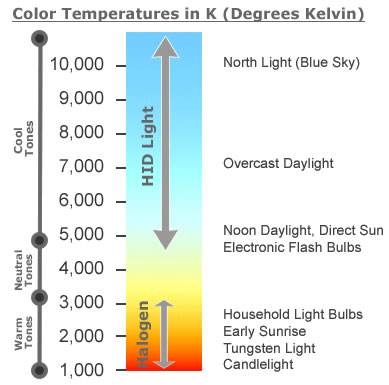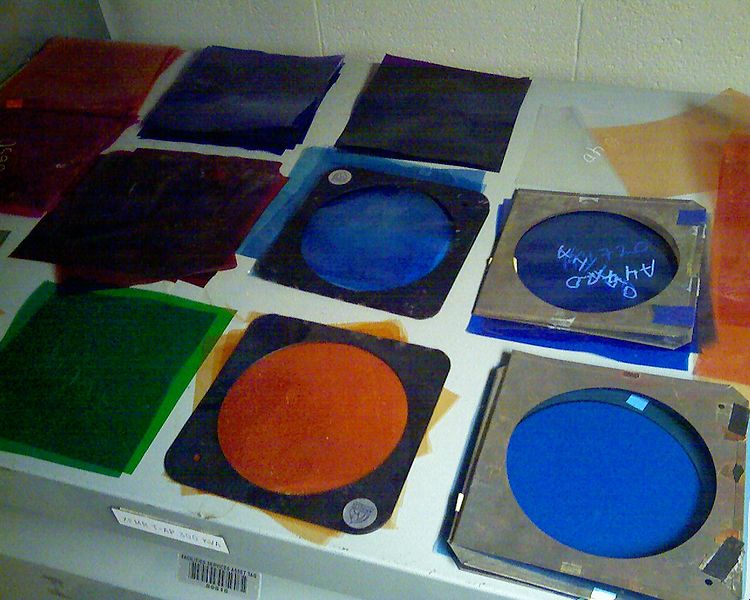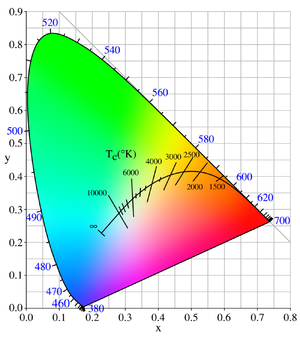 A Director of Photography’s challenge is to craft the quality and character of light in a scene. Since the majority of our projects are on-location, I am often working with a mixture of natural light within the existing scene and the “artificial” light I introduce. If my goal is to have all light be the same color, I need to employ color correction gels to the lamps and natural sources to achieve this. One of my objectives is to use the simplest approach possible. If the natural scene is mostly daylight, I’ll correct the tungsten lights, if the scene is mostly tungsten, I’ll correct the daylight. Something to keep in mind is that you may wish to allow some light sources to retain their natural coloring to enhance the believability of a scene. Doing this usually requires employing the color correction gels as well to adjust the balance to your liking.
A Director of Photography’s challenge is to craft the quality and character of light in a scene. Since the majority of our projects are on-location, I am often working with a mixture of natural light within the existing scene and the “artificial” light I introduce. If my goal is to have all light be the same color, I need to employ color correction gels to the lamps and natural sources to achieve this. One of my objectives is to use the simplest approach possible. If the natural scene is mostly daylight, I’ll correct the tungsten lights, if the scene is mostly tungsten, I’ll correct the daylight. Something to keep in mind is that you may wish to allow some light sources to retain their natural coloring to enhance the believability of a scene. Doing this usually requires employing the color correction gels as well to adjust the balance to your liking.
I recently asked staff member Scott Graham to prepare a resource which explains how this is done in more detail. I think he did a very good job and I hope that it helps you. If you have any questions regarding this, (or any other lighting question), send me an email. Bob Sloan bob@bobsloan.com
Color gel also known as lighting gel is a transparent colored material that is used in production to color light and for color correction placed in front of a lighting fixture in the path of the beam.
Color gels are used for color correction, such as CTB and CTO, “Color Temperature Blue”, and “Color Temperature Orange.
CTB, which is blue in appearance, will correct tungsten lights that typically have a color temperature in the range of 3,200 degrees kelvin to 5,700 degrees kelvin to more closely match the color temperature of “Daylight” which is usually around 5,400 kelvins (nominal daylight).
CTO, which is orange in appearance, will correct a “Daylight” balanced light source (such as many common HMI bulbs) to match the color temperature of Tungsten light which is typically 3,200 kelvin.
There are “half”, “quarter”, and “eighth”, densities of the common color correction gels.

Without color correction gels, a scene may have a mix of various colors. Applying color correction gels in front of light sources can alter the color of the various light sources to match. Mixed lighting can produce an undesirable aesthetic when displayed on a television or in theatre. Conversely, gels may also be used to make a scene appear more natural by simulating the mix of color temperatures that occur naturally. Color gels may also be used to tint lights for artistic effect.
Sunlight at 5600K for example appears much bluer than tungsten light at 3200K.
Higher color temperatures (5,000 K or more) are called cool colors (blueish white); lower color temperatures (2,700–3,000 K) are called warm colors (yellowish white through red).
Fluorescent lights are typically very green in comparison with other types of lighting.
Theatrical color gels are usually used to light a scene for a dramatic effect.
Most video and digital still cameras can adjust for color temperature by zooming into a white or neutral colored object and setting the manual “white balance” (telling the camera that “this object is white”); the camera then shows true white as white and adjusts all the other colors accordingly. White-balancing is necessary especially when indoors under fluorescent lighting and when moving the camera from one lighting situation to another.
| Temperature | Source |
|---|---|
| 1,700 K | Match flame |
| 1,850 K | Candle flame |
| 2,700–3,300 K | Incandescent light bulb |
| 3,350 K | Studio “CP” light |
| 3,400 K | Studio lamps, photofloods, etc. |
| 4,100 K | Moonlight, xenon arc lamp |
| 5,000 K | Horizon daylight |
| 5,500–6,000 K | Typical daylight, electronic flash |
| 6,500 K | Daylight, overcast |
| 9,300 K | CRT screen |
Also see www.currentwaves.com for information on San Diego Rental Lighting for Motion Pictures & Commercials – CurrentWaves – Lighting Grip and Electric in San Diego


